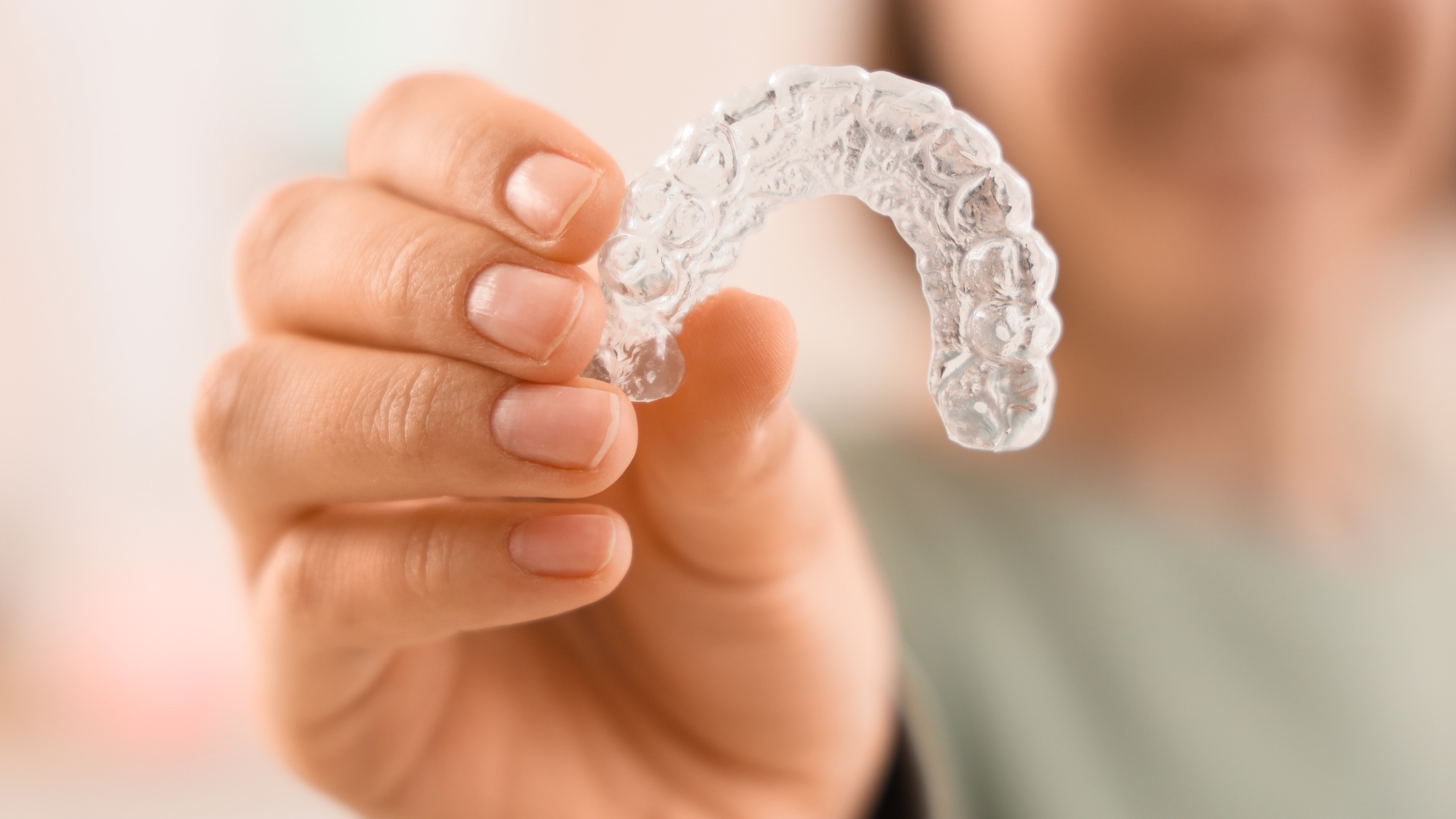
Shaping the Perfect Smile: How Clear Aligner Design Influences Tooth Intrusion
New biomechanical insights reveal why trimline shape and intrusion strategy matter in orthodontic treatment.
Background: Why Intrusion Matters in Modern Orthodontics
Clear aligners have transformed orthodontic treatment, offering a discreet and digitally planned alternative to braces. One of their key advantages is the ability to apply controlled, gentle forces to intrude anterior teeth—an essential step in correcting deep overbites and improving facial harmony.
While aligner technology has advanced rapidly, two design factors remain widely debated among clinicians:
Trimline shape — Should aligners follow a scalloped edge around the gumline, or extend higher for more coverage?
Intrusion approach — Is it better to intrude incisors and canines sequentially or simultaneously?
A new finite element analysis study published in BMC Oral Health offers fresh answers.
What the Researchers Did
Researchers developed a highly detailed 3D digital model of the lower jaw using CBCT data from a healthy adult patient. They simulated four clinical scenarios:
Two trimline designs
Scalloped trimline – closely follows the natural contour of the gumline.
High trimline – extends 2 mm beyond the gingival margin for extra coverage.
Two intrusion strategies
Sequential intrusion – intruding incisors first, then canines.
Simultaneous intrusion – intruding incisors and canines together.
Using advanced finite element analysis, the team measured:
Initial tooth displacement
Stress on roots
Stress on periodontal ligament (PDL)
Overall force distribution across the dental arch
Their goal: determine which combination offers safer forces, better control, and more efficient tooth movement.
Key Findings: Scalloped + Sequential = The Most Efficient Combination
1. Sequential intrusion delivers better anchorage and efficiency
The simulations showed that:
Sequential intrusion generated greater intended tooth movement in the incisors.
Simultaneous intrusion caused unwanted displacement in posterior teeth, indicating poorer anchorage control.
Canine stress sharply increased during simultaneous intrusion—up to three times higher than in the sequential method.
Implication: Sequential intrusion is biomechanically safer and more predictable than simultaneous intrusion when treating lower anterior teeth.
2. Scalloped trimline aligners produce more favorable biomechanics
Contrary to some earlier assumptions, the study found that:
Scalloped trimline aligners generated greater initial displacement.
They reduced root stress by 13–40% compared to high trimline aligners.
High trimlines created additional friction near the gingiva, decreasing intrusion efficiency.
Implication: For lower anterior intrusion, scalloped edges outperform high trimline designs.
3. Stress patterns reveal potential clinical risks
The research also highlighted important safety considerations:
Both intrusion methods produced stress concentration at the cervical third of the roots, especially on the lingual side.
Excessive tipping or poor alveolar bone support could increase the risk of fenestration or dehiscence, particularly during poorly controlled intrusion.
Implication: Careful planning—potentially assisted by attachments or CBCT analysis—is critical to avoid adverse outcomes.
Why This Study Matters
This work adds valuable evidence for clinicians using clear aligners to manage deep overbites. While many manufacturers offer various trimline designs and force protocols, few studies have directly compared their biomechanical behavior—especially in the lower anterior region, where intrusion demands greater precision.
The findings suggest:
Choose scalloped trimline aligners for mandibular intrusion.
Use sequential intrusion when both incisors and canines require vertical movement.
Pay close attention to stress patterns to prevent unintended side effects.
In short, aligner design is not merely cosmetic—its biomechanics shape treatment success.
Conclusion
The study demonstrates that scalloped trimline aligners combined with sequential intrusion provide the most efficient and biologically safe strategy for intruding lower anterior teeth. This optimized approach can help clinicians achieve predictable outcomes, safeguard tooth structures, and improve overall treatment performance in clear aligner therapy.
DOI
https://doi.org/10.1186/s12903-025-07191-9
Original Reference
Su R., Sun J., Li S., & Wang W. (2025). Biomechanical effects of aligner trimline design and intrusion protocol on mandibular anterior teeth: A finite element study. BMC Oral Health, 25, 1798.